Transit planning in the Afrofuturist city is not a pipe dream. By examining Afrofurutist productions such as the series of comic books and blockbuster Marvel movie both named Black Panther, we can readily envision alternative approaches to transit planning. In the various images shown below, we see the “golden city” — Birnin Zana — a veritable eco-paradise and capital of Wakanda.
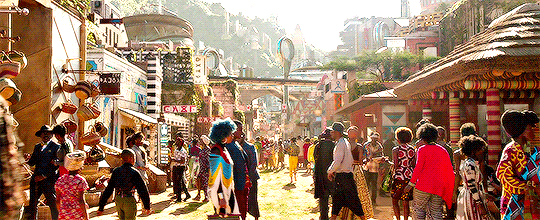
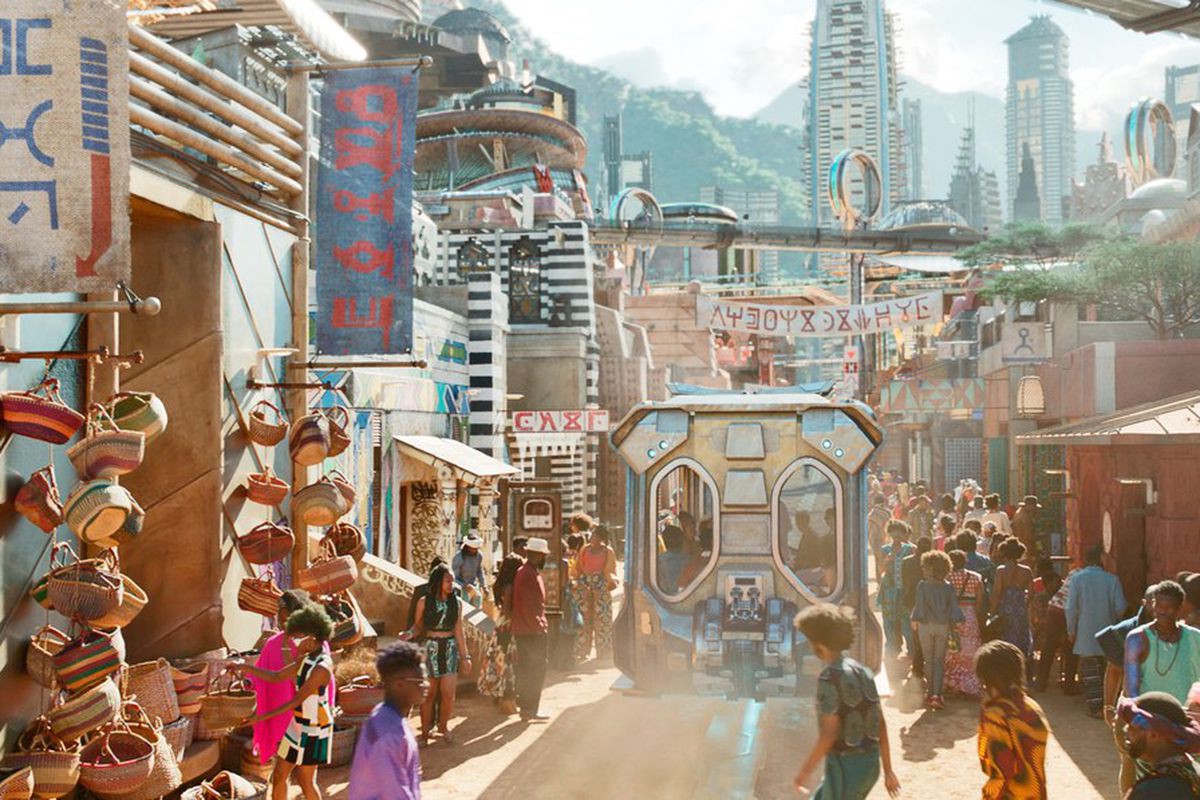
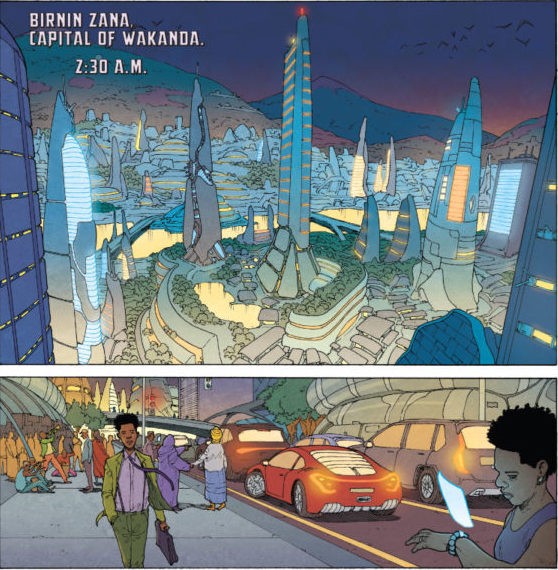

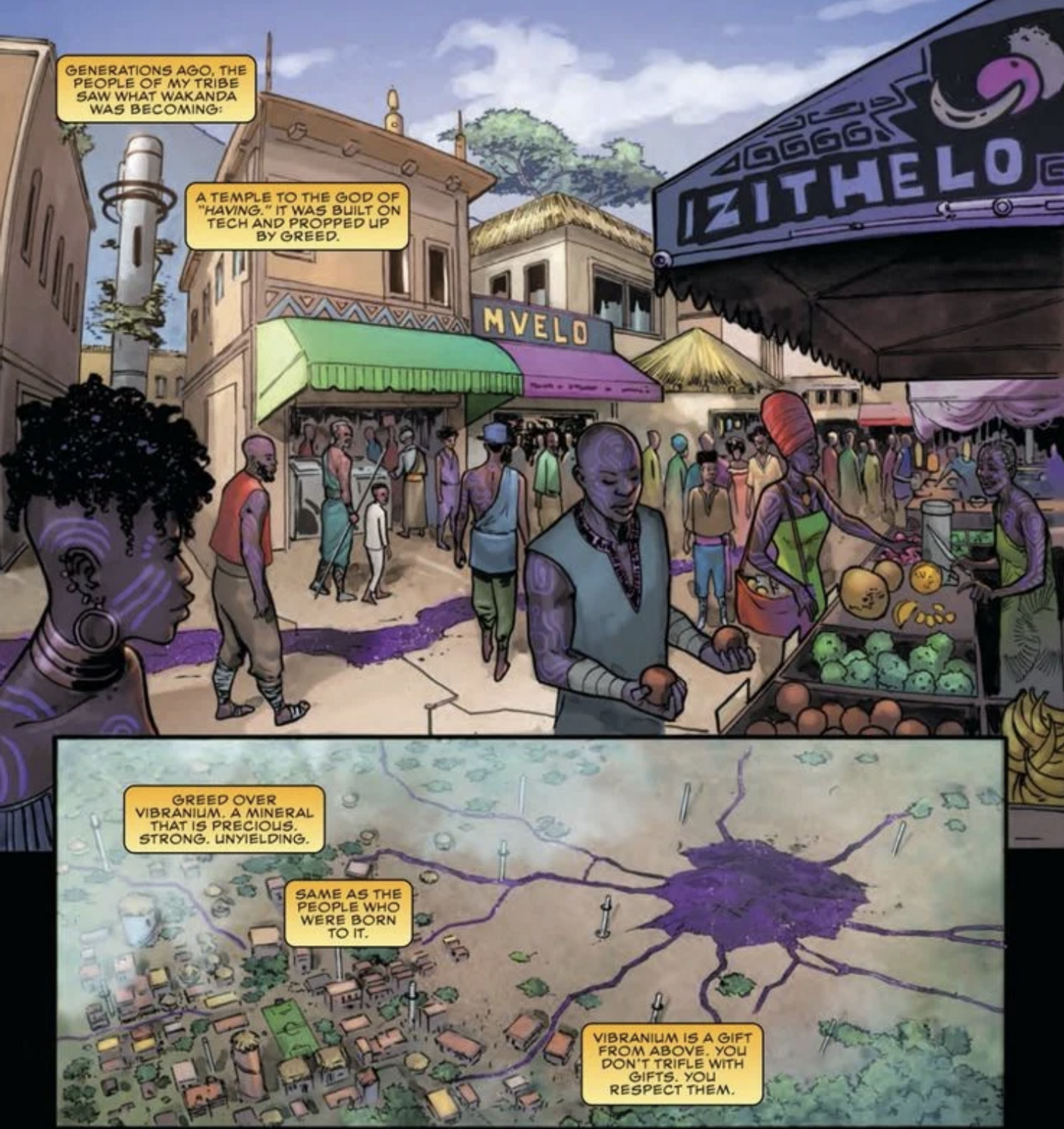
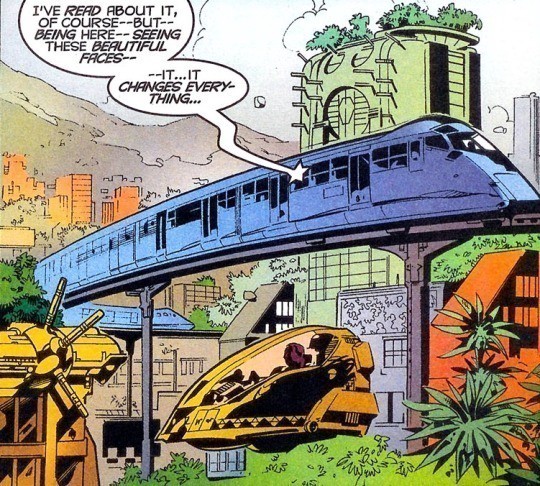
First, notice the absence of bike lanes! Second, notice the various forms of transit: light rail, maglev trains, hover cars, regular automobiles, and streets designed for walking. Both in the movie and the comic book, Birnin Zana’s streets are shown as communal spaces that include vendors selling foods and various goods. Social interaction and commercial transactions are central to Birnin Zana’s streets. Wakanda’s streets include transit vehicles, but there is also an emphasis on pedestrians being able to move in close proximity both with each other and with hover trains.
Obviously, Wakanda is not a city that exists in the “real world.” But Wakanda’s transit design reveals how Black people can design Afrofuturist cities that ameliorate the ravages of urban apartheid AND transform city landscapes in a ways consistent with evolving Black culture (such as designing streets that fulfill the functions of social interaction and commercial transactions). As such, the renderings of Birnin Zana perfectly embody an Afrofuturist planning practice.
In her undergraduate thesis entitled “Afrofuturistic” Architecture, Emily Roos highlights the psychological and imaginative impacts of Wakanda’s design in the Marvel movie Black Panther:
It is by removing reality and portraying Wakanda that the movie, in turn, begs the audience to reflect on reality. Wakanda and its architectural grandeur empowers Africans and Black communities by giving them a new world-wide perspective on what could be. It equally allows all who do not feel the effects of discriminatory futurology to reflect on reality while reimagining an Afrofuturist future.
This does not mean that bicycles or bike lanes cannot exist as transit modalities in the Afrofuturist city. But it does mean that Afrofuturist cities are not bound by planning approaches that include them either. The important thing is that transit planning in the Afrofuturist city can feature different approaches to street design compared to White transit planning approaches (such as Complete Streets).